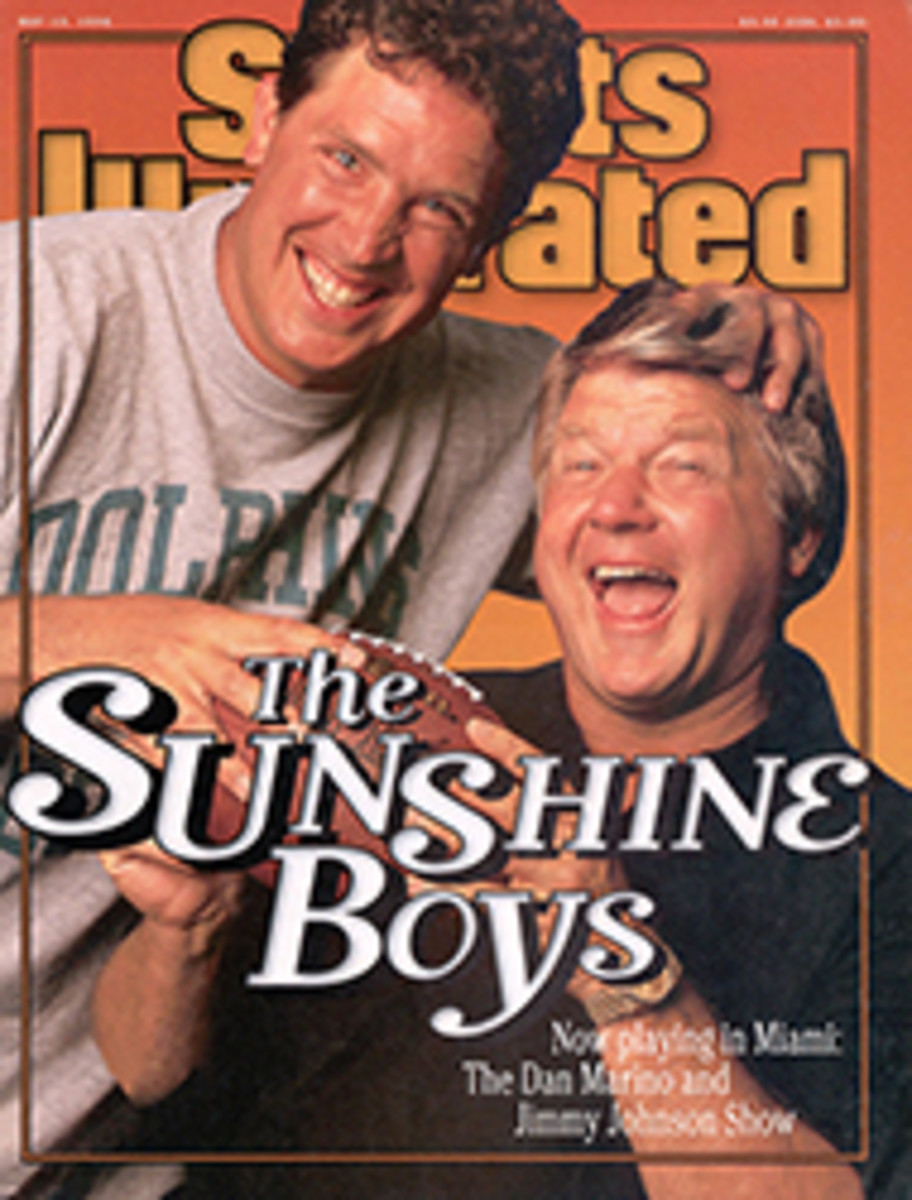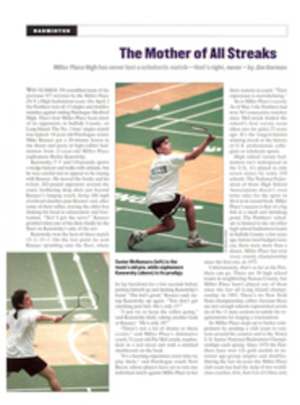
SHARP EYE IN A SIMPLER TIME GEORGE BRACE'S ELEGANT PHOTOGRAPHS CAPTURE THE GOLDEN ERA OF BASEBALL
George Brace seems to have lived a double life. To his neighbors
in Chicago's Logan Square, he's the old man who used to work the
swing shift at Durkee Famous Foods. But Brace had a second job,
which began in 1929 when he was just 16. That summer he went to
work for George C. Burke, who was the team photographer of the
Chicago Cubs and White Sox.
From then until 1993, Brace photographed more than 10,000 major
league baseball players at Wrigley Field and Comiskey Park,
including 189 future Hall of Famers. He shot umpires, batboys,
managers, coaches, owners, hot-dog vendors, members of the
ground crew and everyone else who showed up to watch the
national pastime, including players' wives and children,
politicians and movie stars. To build his collection, Brace also
traded to accumulate more than 1.2 million negatives that
document seven decades of baseball.
Only 376 of those images appear in The Game That Was: The George
Brace Baseball Photo Collection (Contemporary Books, Inc., $35),
but they speak eloquently of a simpler time in sports and in
U.S. life. The compilation is the work of Richard Cahan, the
picture editor of the Chicago Sun-Times, and Mark Jacob, the
newspaper's Sunday editor. Cahan and Jacob culled photographs
from Brace's collection during the baseball strike in the summer
of 1994.
Brace photographed such heroes as Babe Ruth, Hack Wilson, Honus
Wagner, Joe DiMaggio and Satchel Paige and lesser lights like
Kiddo Davis, Bill Serena and Taffy Wright. "The Babe bragged a
lot, but of course he could back it up," says Brace. "Lou
Gehrig? He was a quiet man and so nice. He was my alltime
favorite. Ted Williams, he was nice too. He loved to talk about
photography. But you didn't talk to Ted while he had a bat in
his hands, because that meant he was thinking about hitting."
Brace's collection is meticulously organized in several bulky
filing cabinets. He has, for example, seven folders of negatives
chronicling the 10-year career of outfielder Roy Cullenbine
(1938-47) with the Cleveland Indians, the Detroit Tigers, the
New York Yankees, the St. Louis Browns, the Washington Nationals
and the Brooklyn Dodgers, and several more folders of pictures
from Cullenbine's days as a minor leaguer.
"To accumulate and maintain that sort of collection over so many
years is an amazing accomplishment," said Tom Heitz, who until
recently was the chief librarian at the National Baseball
Library & Archives in Cooperstown, N.Y. "The portraits of
players like Gehrig and Ruth are wonderful. But what makes
George's collection so special is the huge number of
lesser-known players who had a cup of coffee [in the majors] on
their way to oblivion."
In 1929 Brace was a teenage Cubs fan in a family of White Sox
backers on Chicago's South Side. One day he read a newspaper
article about Burke, who took photos not only for the Cubs and
the White Sox but also for the NFL's Chicago Bears. Brace called
Burke, who hired the young man as an assistant. Brace learned to
take pictures with a Speed Graphic camera, helped set up shots
for Burke, developed film and filed their photos. Players
thought he was Burke's son and called him Burke Junior.
For the next 65 years Brace attended at least one game in each
home series the Cubs and the Sox played, except during World War
II. From 1942 to '45 Brace was in the Army and worked as a
surgical technician in field hospitals in the Philippines and
New Guinea. "When I got out of the service I picked up right
where I left off," he says. Although Burke paid him a small
salary, it wasn't enough to support his family, and he never
made much money from the pictures. "I worked the swing shift at
the plant so I could make the ball games. My wife, Agnes, isn't
a big baseball fan, but she put up with me all these years. She
makes rosaries, one a day for 37 years, all for charity."
In Brace's photos, pitchers take exaggerated windups and hitters
wear expressions of fierce determination. Along with posed
"action" shots of each of his subjects, Brace also took two head
shots, one smiling and one serious. He photographed the players
having fun, as in a dugout pose of Yankee sluggers Gehrig, Joe
Gordon, Tommy Henrich, Joe DiMaggio and Bill Dickey taking aim
down the barrels of their bats. He also shot game photos in the
days when photographers were allowed in foul territory. "I was
20 feet away when Gabby Hartnett hit his homer in the gloamin'
in 1938 to help the Cubs clinch the pennant," Brace says. "And
in all the years, I only got hit with three foul balls."
After Burke suffered a heart attack in 1948, Brace took over the
business, and when Burke died three years later, Brace inherited
the collection. The two photographers sold many of their
pictures to players, who used them to fill autograph requests.
Gehrig ordered 100 prints at a time. Burke's and Brace's photos
have been printed in a variety of baseball magazines, and they
appeared on baseball cards put out by the old Ted Williams Card
Co. Framed Burke and Brace prints also decorate the Chicago
restaurant of Cubs announcer Harry Caray.
Fans from around the country also ordered photos of their
favorite players, and Brace always filled requests for pictures
in a variety of sizes. The most popular were postcard-sized
photos, in black and white if they were from 1959 or earlier,
and color from 1960 on. "I never advertised much," Brace says.
"Word just got around over the years."
One customer was Eddie Einhorn, who is now co-owner of the White
Sox. Growing up in New Jersey in the 1940s, Einhorn was a
Cincinnati Reds fan. "I'd order photos from George and get them
autographed," Einhorn says. "When Jerry Reinsdorf and I bought
the Sox in 1981, George came over to me before a game and
introduced himself. I told him I knew all about him, thanked him
for his efforts and told him to keep on doing what he'd been
doing so well for so many years."
Brace, now 83, underwent cataract surgery on both eyes a few
years ago. He has had offers to buy his collection, but he
always politely says no. The business is now managed by his
daughter, Mary, who prints his black-and-white negatives and
fills most orders.
"Years ago a writer asked my wife what she'd do with my
collection when I died," Brace says. "Agnes said she'd build the
biggest bonfire she could. Bowie Kuhn heard about it and sent a
major league representative to put out the fire. I assured him
that we'd never burn anything, but that I wouldn't sell my
collection, either. I barely broke even with it over the years,
but it was my life. It's that simple."
Mark Mandernach, of Arlington Heights, Ill., has written several
stories for Sports Illustrated.
B/W PHOTO: PHOTOGRAPHS BY BRACE PHOTO In 1940 Brace rubbed shoulders with Bob Feller (right) and Jeff Heath. [Jeff Heath, George Brace, and Bob Feller]
B/W PHOTO: PHOTOGRAPHS BY BRACE PHOTO Yankee guns (from left): Gehrig, Gordon, Henrich, DiMaggio, Dickey. [Lou Gehrig, Joe Gordon, Tommy Henrich, Joe DiMaggio and Bill Dickey holding baseball bats like rifles]
TWO B/W PHOTOS: PHOTOGRAPHS BY BRACE PHOTO Thurman Tucker mouths off with Joe E. Brown (left); Gabby Hartnett and son are dressed to the nines.

